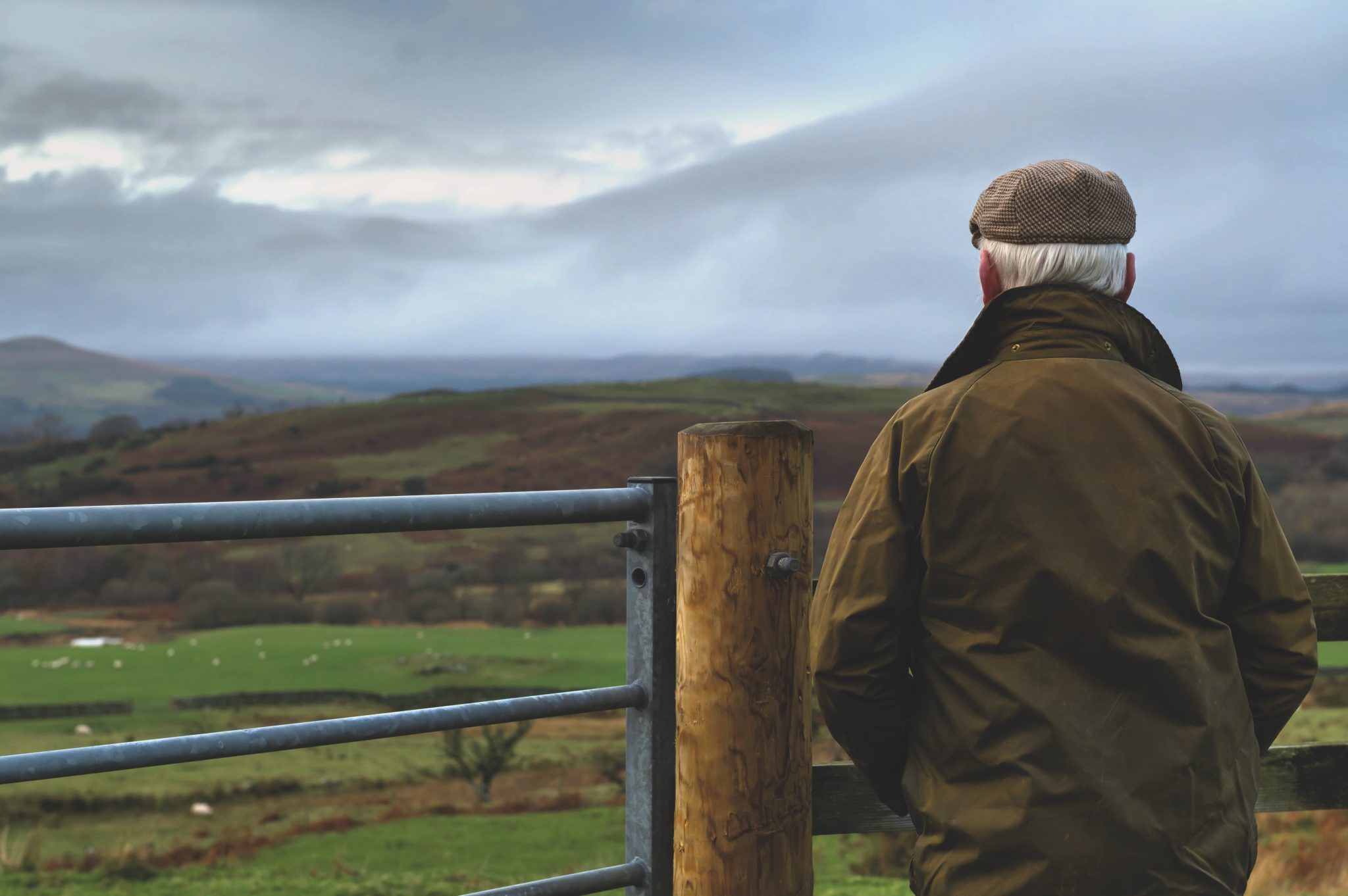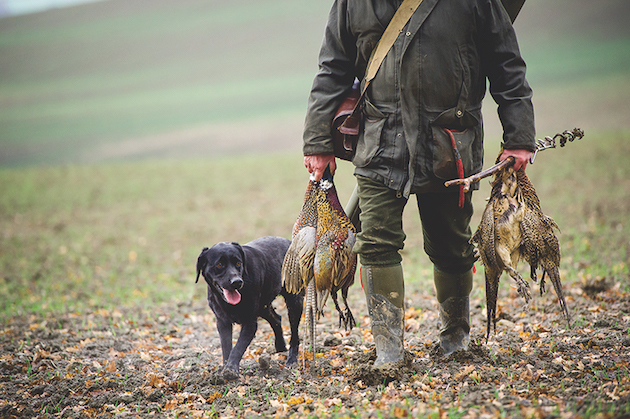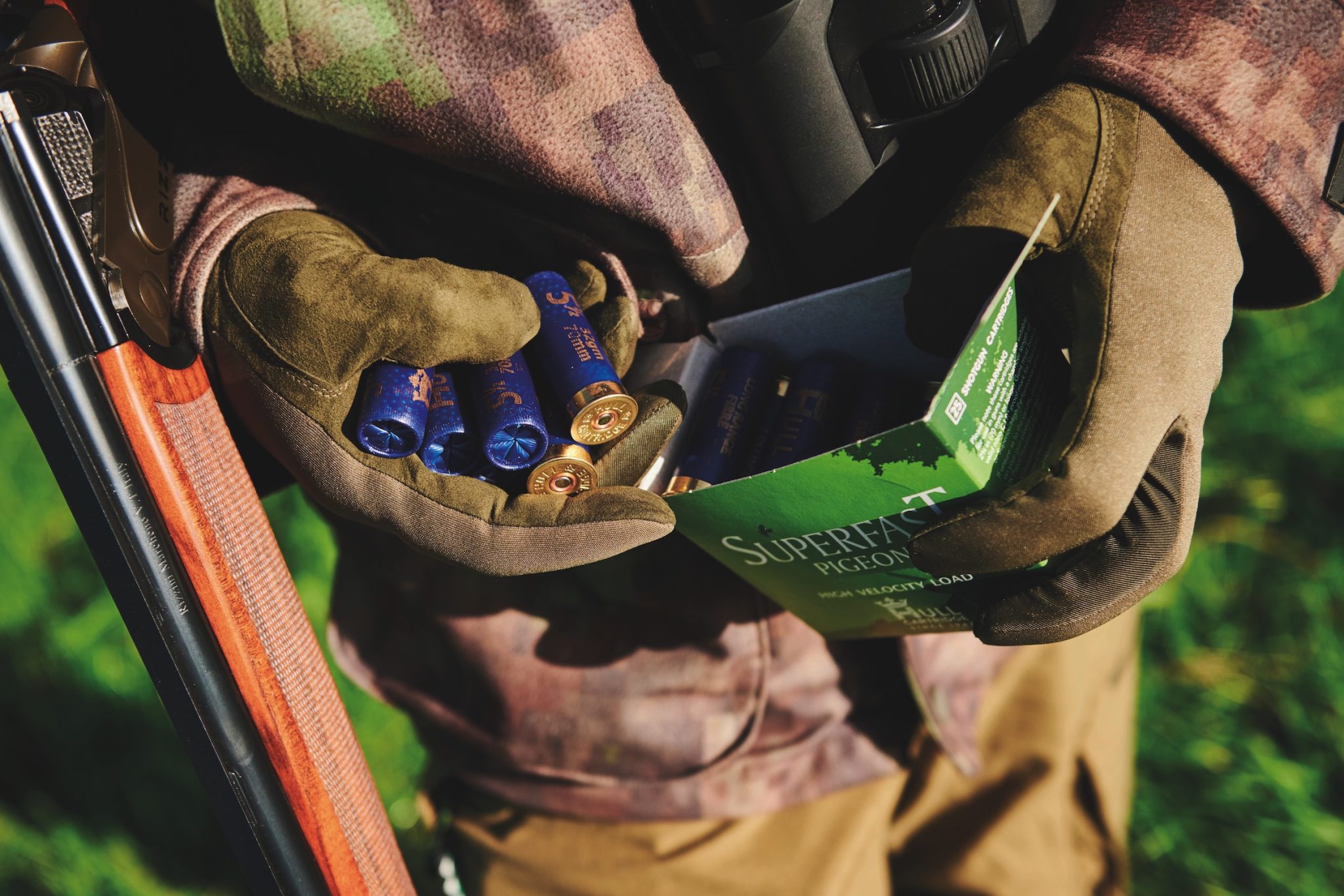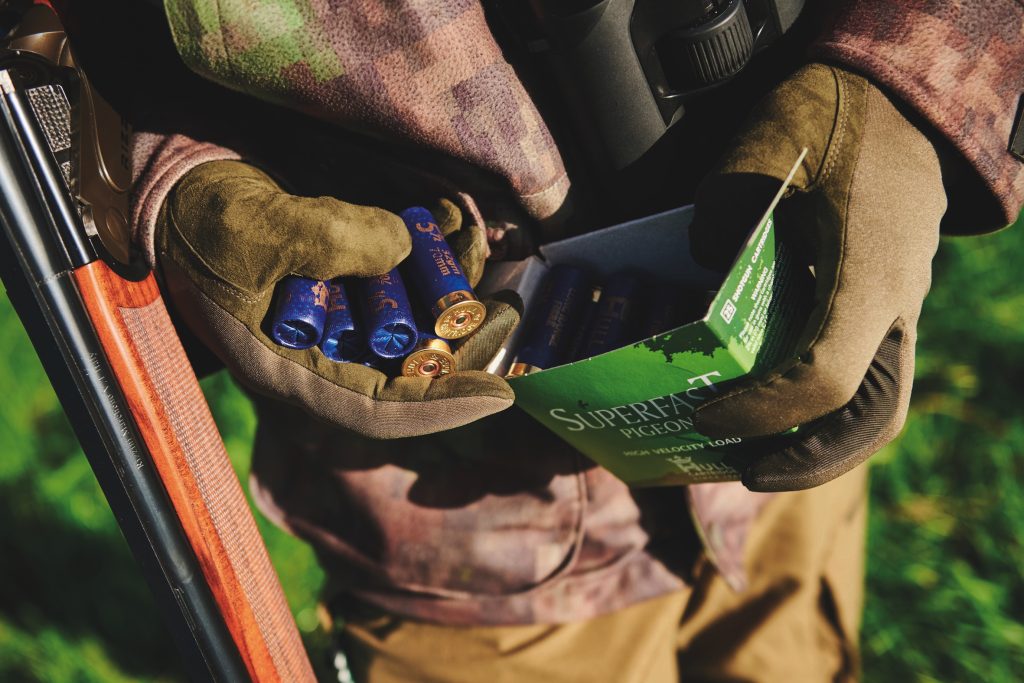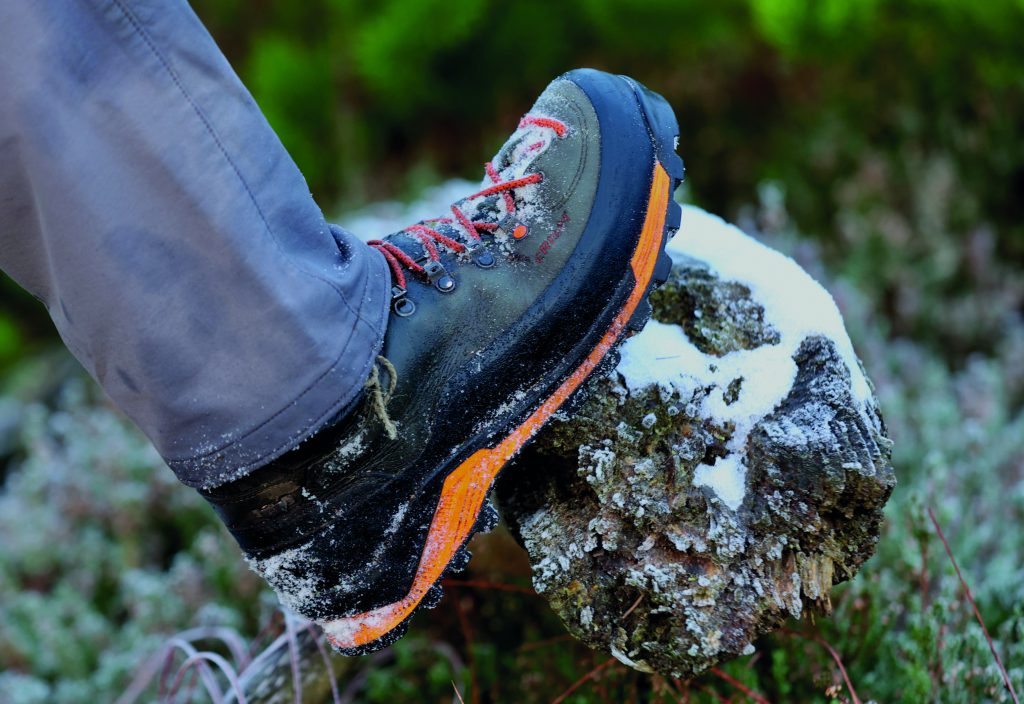The countdown is on for The British Shooting Show – book tickets online today and save on gate price!
Stalking boots: what makes the perfect pair?
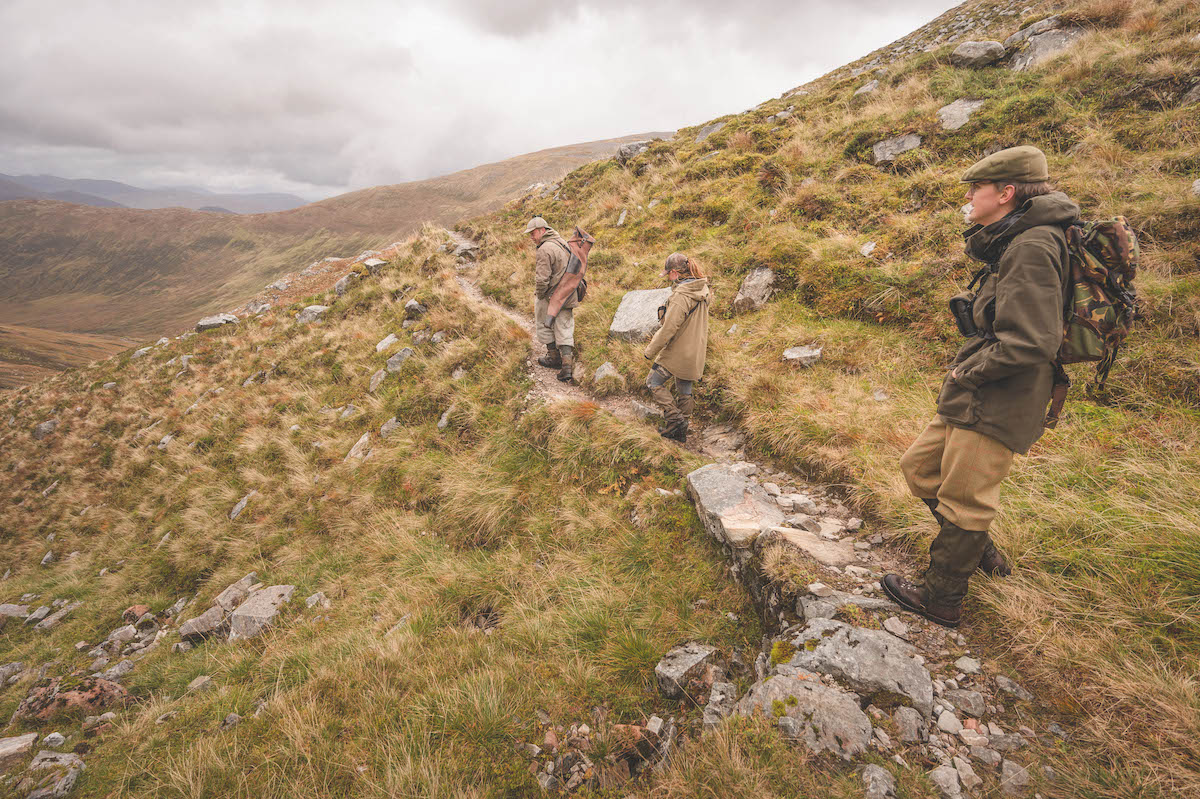 Deer fill the glen below and Cameron Emma and Jack pause to watch their movements
Deer fill the glen below and Cameron Emma and Jack pause to watch their movements
Stalking boots matter. Because nothing ruins a fine day on the hill like a blistered heel. We’ve all been there. Add to this the misery of wet feet or cold toes and the perils of poorly picked footwear can really add up. (Take a look at our list of the best walking boots.)
Stalking boots for the task
The diversity of settings in which fieldsports occur places a range of demands on our footwear and getting the right boot for the job can be a difficult task. However, as anyone who has recently purchased a pair will attest, boots are big business and manufacturers are constantly working to make their products the ones we choose. So what should you be looking for in a boot?
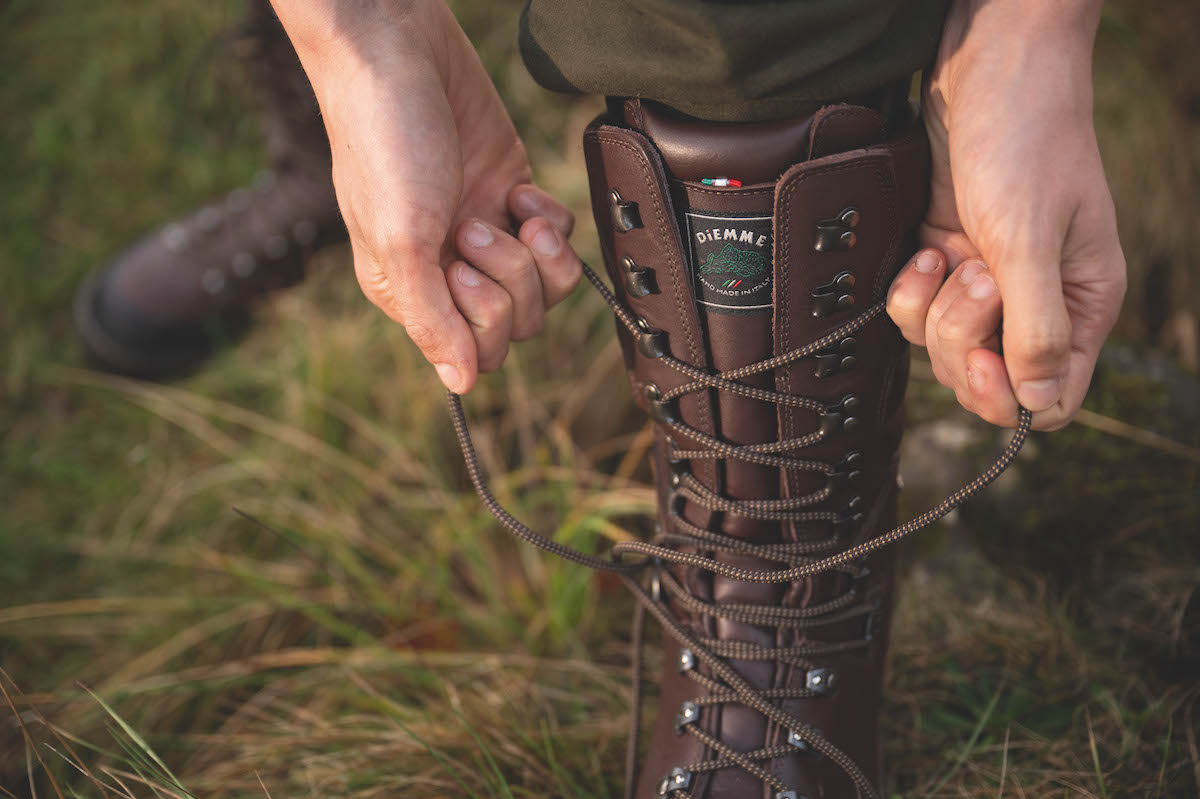
A high-full-leather boot provides ankle support and keeps out the elements
If your quarry is to be found in the high and wild places, you’ll need a boot that’s equal to the terrain. Support is critical — a high boot that laces all the way up stabilises your ankle and reduces the chance of doing yourself harm on rough ground. This becomes even more important on the return journey when — if you’ve been lucky — you will be carrying or dragging a weighty carcass for all or some of the way.
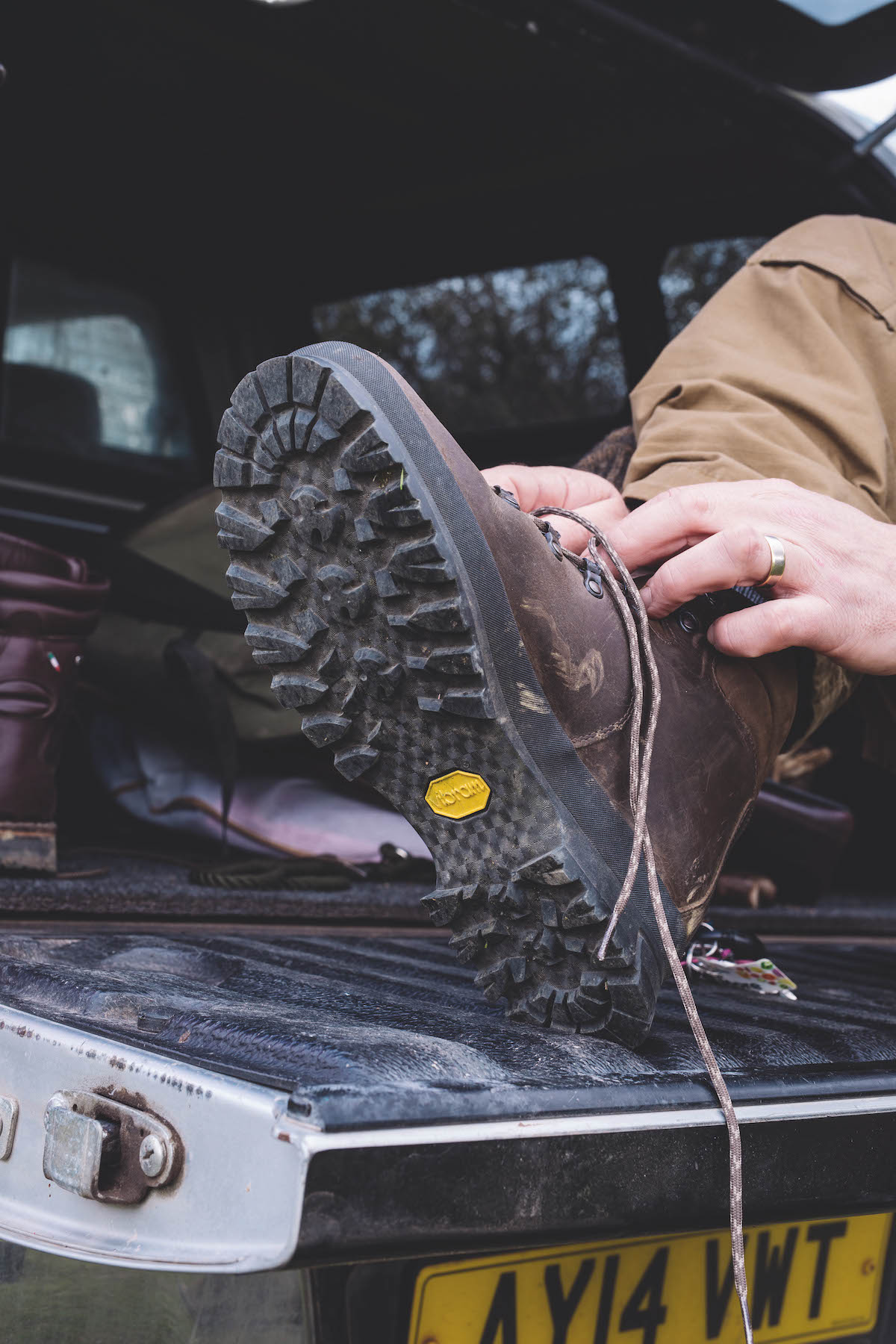
A rugged sole is a must for rough, rocky terrain
A small slip on a wet rock can end badly if there’s an additional load behind it. In these circumstances the tread of the boot is also vital — make sure the soles have a good, rugged series of lateral grooves. They might bring more muck into the kitchen, but you’ll be glad of the improved downhill braking performance.
Mountains eat boots like nothing else and many designs of rough-terrain footwear offer various external reinforcements, such as rubber toecaps, heel covers or side and instep protection. Far from being purely cosmetic, these can add years to the functional lifespan of a pair of boots, but usually come at the price of significantly increased weight. This might seem like a trifle, but heavy boots can make a big difference if your mountain days are long ones — is there any other kind?
Weight consideration
I favour a pair of high, all-leather Zamberlan Hunter Pro boots for winter stalking that weigh in at about 1.5kg. By contrast, a regular stalking companion uses a pair by Härkila that tip the scales at a mere 700g. (Read our list of the best shooting boots.)
After five miles uphill over rough ground this makes a difference — and is, of course, the reason why he climbs hills faster than I do. Alongside Zamberlan, Altberg has an excellent range of rugged, military-style boots, while Scarpa also has an impeccable reputation in the high country.
Moving into the lowlands, the demands of the environment change markedly. High, heavy boots are unnecessary and even something of an encumbrance. Woodland stalking, in particular, requires a degree of stealth that’s very difficult to achieve in rugged footwear.
The fit of a boot is important for comfort and support but sizing can vary widely between brands, so trying out a range of styles is a crucial part of the search process
A thinner sole with good flexibility will help you to feel what’s happening underfoot, reducing the number of stones scuffed and twigs snapped. Should you need to drop to a quick crouch, you can do so without losing circulation in your toes or emitting the orchestra of creaks and squeaks that your heavy boots give out.
Most of the major manufacturers produce light, ankle-height boots with thinner, responsive soles. Brandecosse has some excellent ones, such as the Fagiano, and Le Chameau — not content with dominating the high-end wellington market — sells some extraordinarily light mid-height boots.
Woodland is possibly the perfect environment to consider synthetic boots over full-leather ones, saving weight and avoiding overheating in the warmer months. They require far less maintenance than leather, are quite often cheaper and, though I am a great fan of leather boots, it never fails to amaze me how comfortable some of the modern synthetic offerings are without any breaking in whatsoever.
Rough shooting and walked-up days are something of a crossover, covering a multitude of terrains and conditions. Here in south-west Ireland, where the water table is a bold, gregarious creature fond of the open air, waterproofing is key.
Most outdoor brands now incorporate a Gore-Tex membrane (or similar proprietary liner), but pay attention to the design of the tongue. A bellows-style tongue stitched to the upper will allow you to slosh happily through shallow water and bog, or stand in a puddle, whereas some mid-range models of high boot are only effectively waterproof below the ankle.
If your shooting tends towards the rougher side, full-leather boots provide the best protection against nature’s arsenal of sharp rocks and thorns — I have a pair of Zamberlan Vioz GTX. Some brands of synthetic outers are admittedly very tough indeed, but I have seen plenty plucked by briars or even pierced by blackthorns. Again, take care around the mid-range as some ‘full leather’ these days is pitifully thin.
Boots should be selected for comfort and with the intended tasks in mind
Comfort
Rough shooting mileage can be considerable — particularly following a pair of setters over bog and hillside — and together with waterproofness and toughness, comfort is critical. Alongside Zamberlan, the classic Scarpa Ranger model and the Meindl Kansas GTX are both superb leather boots that several of my shooting friends swear by.
If your boots will see more time on a peg than climbing a mountain, there are other features you’ll need to consider. Standing for significant periods of time places different stresses on your feet and you’ll want to pay attention to the insoles. A good, well-cushioned heel and decent arch support will make a remarkable difference to how you feel at the end of the day.
Crippling pain
At its most extreme, hours spent in boots with poor foot support can lead to plantar fasciitis — also known as policeman’s heel — which can range from mildly annoying to cripplingly painful and can often be avoided by choosing footwear with better support. I learned this the hard way.
Wellies, though deceptively comfortable, are notoriously bad for supporting feet and if you’ve had problems in the past, it might be worth considering switching to a pair of boots that offer better arch support. If you’re truly welded to your wellingtons, at least consider buying a quality pair of insoles from a reputable brand such as Dr Scholl’s. (Read our list of the best shooting wellies.)
Immobility, whether standing on a peg or sitting in a high seat, also raises the issue of cold feet. Many cold-weather boots have integral insulation and, if you’re planning on doing more standing than walking, it’s prudent to leave a little extra space for a second pair of socks (or an additional insole). Some brands take it to another level entirely. Alpina now offers a heated boot that, though pricey at around £350, certainly solves the problem of cold toes.
Aside from the importance of selecting a boot with the correct characteristics for your intended activity, getting the right fit is possibly the most important aspect of all and this often comes down to brand choice. There is, somewhat incredibly, no standardisation for sizing across the various footwear brands. This is why you take a size 10 in some brands and a nine in others. Every brand has its own features when it comes to other aspects of fit. In many ways, this is a good thing — after all, everyone’s feet are different.
For example, I have long coveted a pair of all-leather Scarpas for the mountain, but the fit of the boots is simply too narrow for my feet. Zamberlan, on the other hand, fits me perfectly. There’s no easy shortcut to this knowledge — most of us get there over the course of several years and via some degree of — often quite expensive — trial and error.
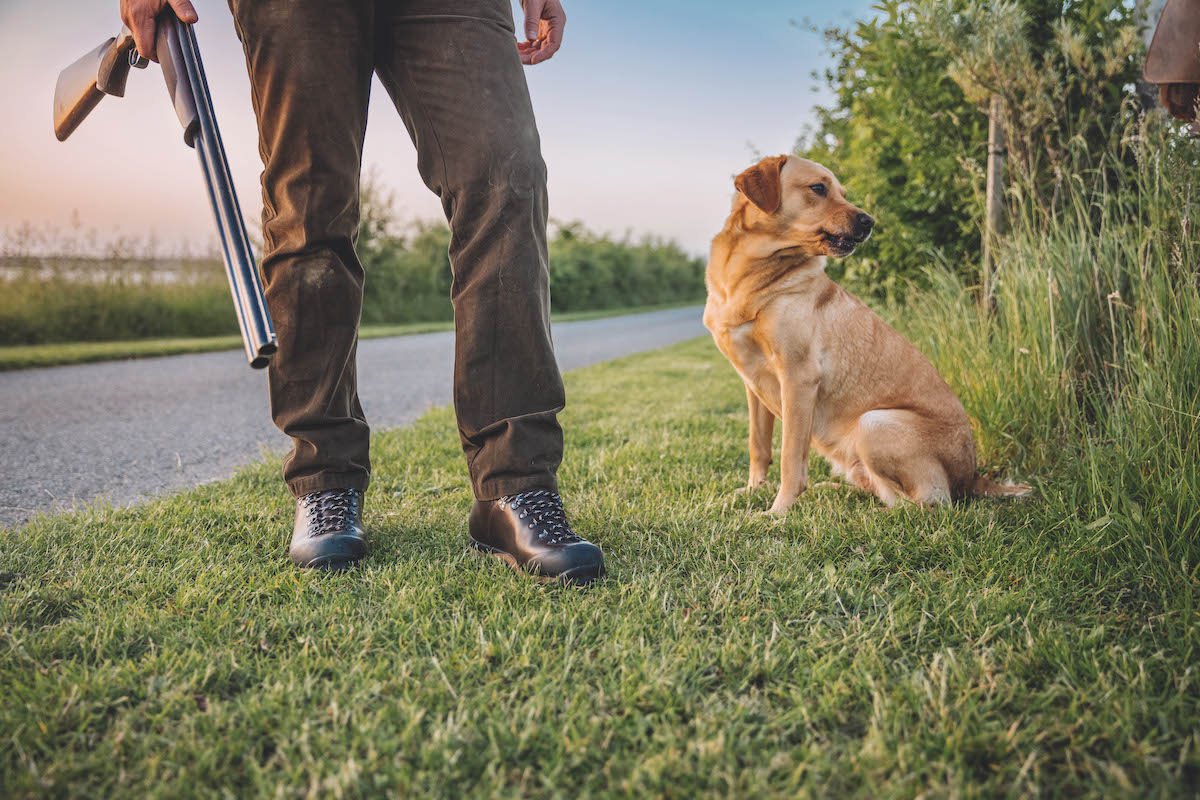
Full leather boots are durable, but synthetic materials are usually lighter
It does, however, underline the paramount importance of getting along to an actual shop and trying on as many pairs from as many different brands as possible.
Some years ago, I did believe, briefly, that I had found a boot for all occasions — this was a high, all-weather boot from a major hunting brand. Synthetic (but not gaudy), light (but not obviously flimsy) and supremely comfortable, they seemed to tick all the right boxes.
While they gave me great joy, the boots lasted less than 18 months. Chastened — and several hundred pounds worse off — I reverted to my previous system of heavy boots for mountain and hill, lighter boots for the lowlands, and considered my lesson well learned.
There are few things with greater potential to ruin your day outdoors than poor footwear. As a fieldsports enthusiast, you can expect to spend — quite literally — thousands of hours in a good pair of boots, so it’s well worth the time, effort and expense that it takes to get it right.
Related Articles
Get the latest news delivered direct to your door
Subscribe to Shooting Times & Country
Discover the ultimate companion for field sports enthusiasts with Shooting Times & Country Magazine, the UK’s leading weekly publication that has been at the forefront of shooting culture since 1882. Subscribers gain access to expert tips, comprehensive gear reviews, seasonal advice and a vibrant community of like-minded shooters.
Save on shop price when you subscribe with weekly issues featuring in-depth articles on gundog training, exclusive member offers and access to the digital back issue library. A Shooting Times & Country subscription is more than a magazine, don’t just read about the countryside; immerse yourself in its most authoritative and engaging publication.



